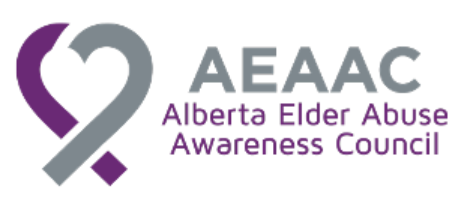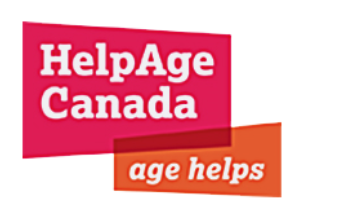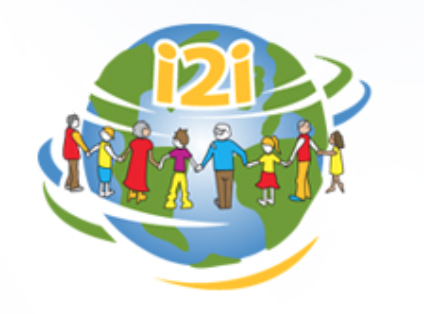- Details
- Published: 21 April 2016
By Jenny Ruan
Gao came to Canada five years ago. She was sponsored by her son, Henry. He and his wife May had twin baby girls. Gao was excited to meet her first grandchildren and welcomed the opportunity to care for them when her daughter-in-law returned to work. Consistent with immigration policy, Gao’s son signed an undertaking with the government of Canada to be financially responsible for his mother for a period of ten years.
Soon after arriving in Canada, Gao realizes May expects a lot of her. In addition to caring for the girls all day, Gao must cook all the meals, and do all the grocery shopping, housework and laundry. May often reminds Gao that it was very expensive to bring her to Canada and cover her food, housing and health care.
There are now four grandchildren. Although Gao feels blessed with such a beautiful family, she is increasingly exhausted by all the housework. She has developed health issues and has no time to go to the doctor regularly. Her doctor wants her to rest during the day, but this is impossible with the caregiving responsibilities she has. Her daughter-in-law is a very conservative spender. She will not pay for the new eye glasses Gao needs, or Gao’s blood pressure medicine. Gao longs to take an English class at the community centre or practice Tai Chi with the women in the park in her neighbourhood, but May says she needs Gao’s help all day. The Minister in the church approaches Gao to inquire about her when he notices her decline in health. He is very kind but Gao is afraid to tell him what is going on at home. She worries that her son will be embarrassed or that May will have her deported.
Elder abuse is often a silenced issue. This is true across culture—it is really hard to speak out when someone you love is hurting you. However, it can be especially difficult for older Chinese and South Asian adults to reach out for assistance due to1:
- Cultural values around not discussing family problems outside the family
- Immigration power dynamics
- Language barriers to accessing information about rights and options
With the above concerns in mind, the Canadian Centre for Elder Law (CCEL) collaborated with the Centre on Aging at the University of Victoria, the National Initiative for the Care of the Elderly (NICE), MOSAIC, and the Inter-Cultural Association of Greater Victoria (ICA) on a project focused on exploring the nature of elder abuse in Chinese and South Asian communities and developing educational tools to help service providers address the needs of older adults.
The objectives of the collaborative project were:
- To build awareness around the prevention, recognition and response to elder abuse in the Chinese and South Asians communities;
- To support front-line workers through education and training, i.e., by increasing access to relevant tools that would help them to respond effectively and protect older adults in these communities against elder abuse; and
- To create a shared leadership and collaborative network across the project’s partner organizations and their affiliates to reduce elder abuse in these ethno-cultural minority communities in BC.
This project is funded by the Council to Reduce Elder Abuse (CREA). The goal is to develop a set of tools that is truly responsive to the experiences of Chinese and South Asian older adults, as opposed to following the more traditional approach of developing a generic tool in English and translating it into other languages.
A one-size-fits-all approach, which is simply translating existing English tools to other languages, does not adequately address the needs of minority ethno-cultural communities.
-- Krista James, National Director of Canadian Centre for Elder Law (CCEL)
This one-year project consists of three phases:
Phase 1: Community-based research
We recruited front-line workers, including social workers, health care workers, and law enforcement officers, who work with Chinese and South Asian communities in the Lower Mainland and Greater Victoria to participate in focus group sessions. Lai’s (2009) interview guides from his elder abuse in ethno-cultural communities study were used as a reference. Focus groups were approximately 1.5 hours and were generally conducted in English. We offered front-line workers the opportunity to attend discussions in Cantonese, Mandarin or Punjabi and found that other than one interview in Cantonese, front-line workers largely preferred English for these discussions. Participants were asked questions about the nature of elder abuse in the communities they work within, barriers to supporting older adults who are experiencing abuse, and key information to which Chinese and South Asian older adults and service providers need access, in order to enhance capacity to support and assist older adults.
Phase 2: Environmental scan
Research was conducted to determine what elder abuse tools—both digital and paper—currently exist for the Chinese and South Asian communities in BC. A law student working at CCEL conducted an environmental scan of elder abuse resources available in Chinese and South Asian languages.
Phase 3: Bringing phases 1 and 2 together
Members of the project team compared the themes emerging from the community-based research and the topics covered in tools that are currently available in Chinese, Punjabi and Urdu. The team worked with a designer to produce an infographic illustrating learning needs, available tools, and the gap between the tool with the goal of identifying, “what print or digital tools are needed in order to enhance capacity to assist older adults in Chinese and South Asian communities who are experiencing abuse?” The infographic was presented to a meta-focus group of representatives from a broad spectrum of services providers at a participatory session on November 13, 2015. Participants engaged in small group work intended to answer the questions: (1) What is the most pressing topic you would focus on if you had funds to develop an elder abuse tool to serve Chinese or South Asian older adults? (2) What topics would you address? (3) What methods would you use to communicate ideas (print, video, audio, etc.)?
Findings
The Language of “Abuse”
Often when service providers encountered financial or emotional abuse, perpetrators did not view their actions as infringing on their older family member’s personal rights. “Abuse” is a term with a strong negative connotation and it is thus difficult for many older adults in these communities to characterize their situations as abuse. Service providers felt that tools targeting these communities needed to use terminology that Chinese and South Asian older adults would feel comfortable with, accept and understand in order to be effective in raising awareness. Some participants from the meta-focus group suggested that addressing the issue of elder abuse from a health angle would be a better way to initiate contact and dialogue with Chinese and South Asian older adults.
Respecting Cultural Values—Meeting the Older Adult where s/he is at
The cultural practice of multiple generations living together in one residence and strong family ties can contribute positively to the lives of older adults in Chinese and South Asian culture, resulting in sustained relationships with children and grandchildren and less social isolation. However, service providers tell us that these dynamics can also make it harder for older adults to talk about or escape abuse.
But sometimes to say yes, I’m in an abusive situation - that’s very shameful. Who wants to say that my son, daughter or spouse, or someone that I love is abusing me. – Front-line Service Provider
Ideally, the seniors should be able to set boundaries and say that okay, you are at this age now, you can’t live with me anymore and you need to go, but in some cultures, we don’t do that, right? Like, some cultures don’t encourage that separation. – Front-line Service Provider
Service providers can encounter difficulties reaching out and offering assistance to older adults who have very strong emotional and physical attachments to their family. Further, concerns about bringing shame to the family can make abuse difficult to talk about. These distinct cultural issues suggest that an intervention involving family mediation and safety planning might be more effective in these communities. Often older adults in these situations require outreach efforts, and traditional ways of supporting them from within the abusive relationship and the requirement to leave are not realistic options.
Making Resources Accessible
Places such as pharmacies, doctors’ offices, and temples are frequently visited by older adults and therefore are convenient locations for elder abuse services or resources to be made available. In addition, front-line service providers indicated that media, such as radio, newspaper, and television (presented in South Asian or Chinese languages), are the most popular, and thus most accessible means of offering information and services. Written text is sometimes not effective because older adults may not be able to read in any language.
Gender and Elder Abuse
Older women can be exploited because they are often expected to provide child care, and perform many domestic duties, such as cooking and cleaning. For this reason, in addition to tools targeted towards the whole family, services specifically for older women should also be developed.
Building on Strengths
To avoid cultural stigmatization, public service announcements and awareness campaigns should champion the positive aspects of culture (cohabitation, collectivism, reverence for older adults), focusing on finding a “champion or pioneer” within the community and building capacity for peer support. Further, capacity building should take place with communities from the outset—i.e., involving community members at every stage of the research—from defining the research “problem” to the action component. Collaboration between academia and community is needed to conduct meaningful research and effectively implement changes in communities.
Community resources should be grounded in research, and research should be based on good community work.
- Krista James, National Director of CCEL
Attention to the core concepts of engagement, relationships, and process, is key to the mobilization of knowledge in community-based participatory research projects such as this.
- Karen Kobayashi, Associate Professor and Research Affiliate, Centre on Aging, University of Victoria
Elder Abuse Posters in Chinese and South Asian Communities
Based on themes emerging from all three phases of the project, the team is now developing a series of plain language elder abuse posters that rely on minimal text and significant imagery to communicate information. Ideally, posters will be placed at accessible locations such as pharmacies, doctors’ offices, and temples. The theme of healthy aging may be used to frame the notion of abuse because an emphasis on the importance of health and health care was reflected in discussions with stakeholders. Thus, health care-related sites (doctors’ offices, pharmacies, hospitals) may be an excellent place to post materials.
Our hope is that our project provides a basis for the development of further community resources which are tailored to address the unique needs and experiences of older adults and their families in different ethno-cultural communities.
Dong, X. (2012). Culture diversity and elder abuse: Implications for research, education, and policy. Generations, 36(3), 40-42; Lai, D. W., Daoust, G. D. & Li, L. (2014). Understanding elder abuse and neglect in aging Chinese immigrants in Canada. The Journal of Adult Protection, 16(5), 323-334; Mutta, B., Kaur, A., Singh, R., & Singh, A. (2004). Building social capital in the Punjabi community. Retrieved from http://morgan.ucs.mun.ca/~asingh/new_site/files/final_elder_indcomm.pdf
 By Jenny Ruan, Pro Bono Students Canada volunteer
By Jenny Ruan, Pro Bono Students Canada volunteer
Jenny is a first year student at the Peter A. Allard School of Law and a Pro Bono Students Canada volunteer. Before entering into law school, Jenny completed undergraduate studies in pharmacology at UBC. She has interned as a scientific researcher at both Roche Pharmaceuticals and Genentech in the United States, and worked as a clinical research assistant at the BC Cancer Agency in Vancouver

















